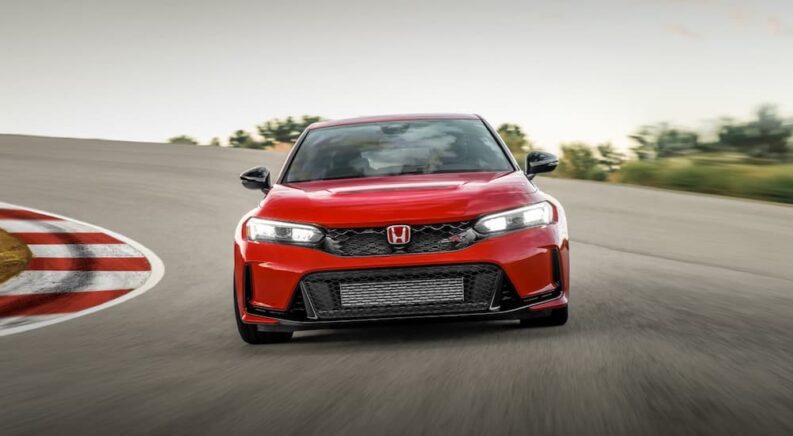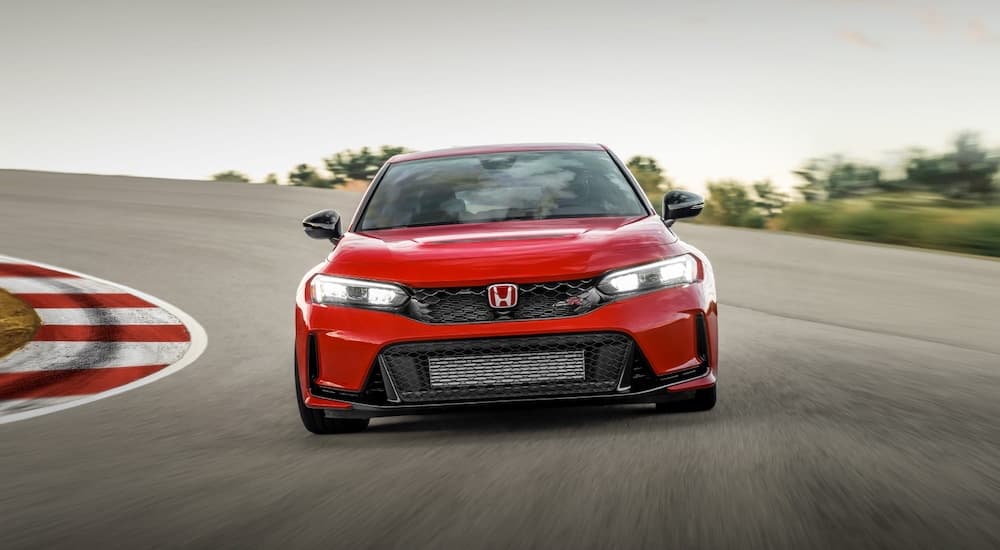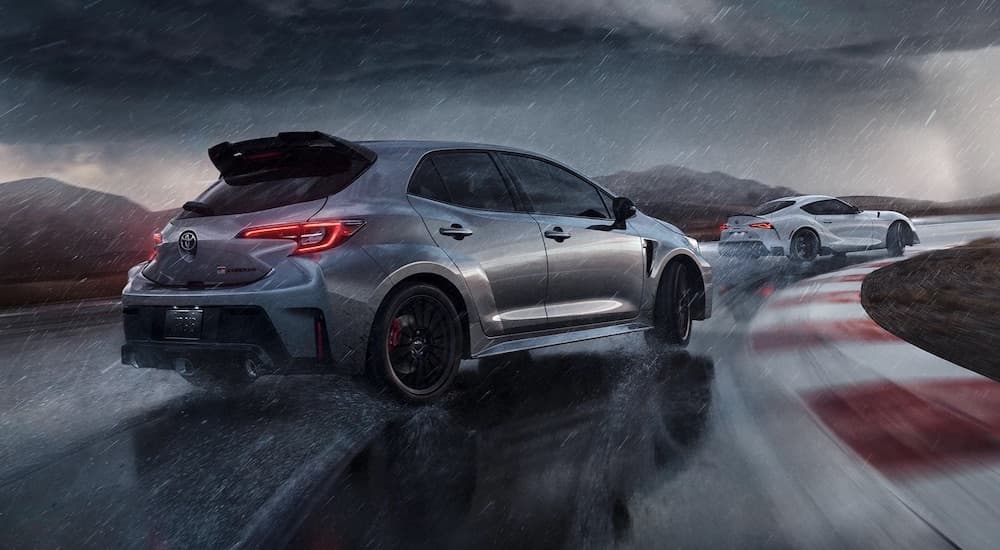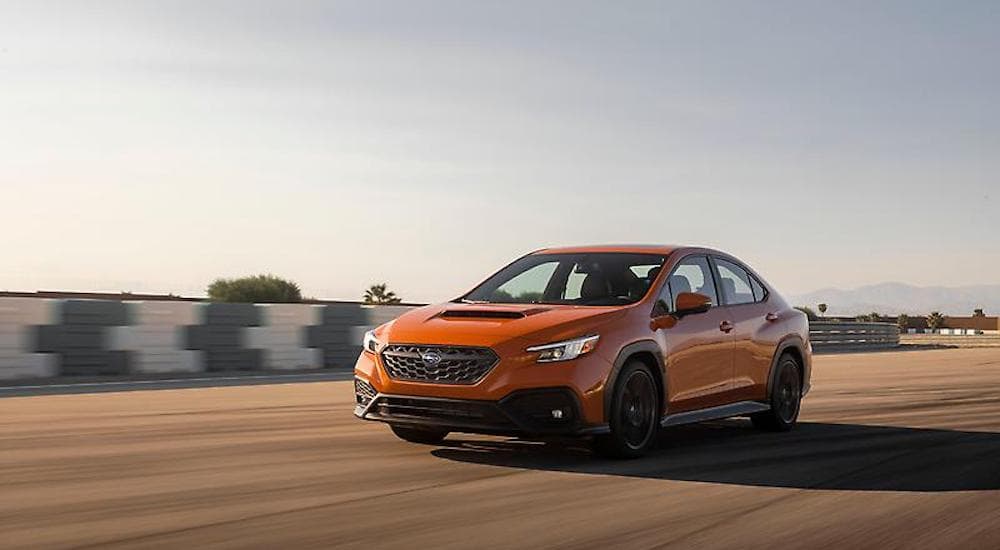Japanese automotive engineering has always been on the cutting edge, and the compact car is no exception. For the longest time, a compact was simply a fuel-efficient, affordable way to get you to work. But over the last few decades, Japanese automakers have redefined the compact as a nimble, powerful machine you can take to the track or some deserted back roads and cut loose.
These days, people who love big performance in small sizes have three Japanese track-ready compacts to choose from. The release of the 2024 Honda Civic Type R, Toyota GR Corolla, and Subaru WRX is the next chapter in this modern phenomenon. Using tried-and-true commuter cars as their base, they crank things up to 11 with overhauled engines, suspensions, aerodynamics, and more.
Calling this trio of vehicles a competition or rivalry is tempting, but the reality isn’t so simple. Each puts a twist on the concept of turning an everyday car into a high-performance demon for people who want to experience compact thrills. Let’s crawl underneath the hood of each to learn a little more about what they bring to the table and the history of these “super-compacts.”
The Honda Civic Type R: A Track Compact King
When the original Civic Type R put tires to the pavement in 1997, it announced itself with a bang. Although the Civic had been used in touring car racing since the early 1970s, the average daily driver still viewed it as a basic, no-frills car. However, with the Civic Type R, Honda’s engineers had one goal: turn the Civic into a race car that could still be driven on the road.
The result was a rousing success. With a more powerful engine, stiffer suspension, new brakes, and other track-minded upgrades, it was like driving a completely different car than the esteemed Civic. It’s said that even the late FIA Formula One champion Ayrton Senna was impressed by early prototypes of the Type R. Since then, each new generation of the Civic has brought a new generation of the Civic Type R. In 2017, the fifth-generation Type R finally arrived in North America for the first time, allowing enthusiasts to make a Civic roar.
The newest overhaul came out for the 2023 model year. Honda had a lot to live up to with the sixth-generation Civic Type R. The previous edition had been a 2018 MotorTrend Car of the Year finalist, and it set front-wheel drive (FWD) lap records at legendary tracks like Nürburgring, Magny-Cours, and Silverstone. Fans of getting a four-cylinder car around a closed asphalt course as fast as possible will love the new Type R all over again. The turbocharged engine got a bump from 306 hp and 295 lb-ft of torque to 315 hp and 310 lb-ft. It also has an improved manual transmission for better shifting, a retuned suspension for cornering stability, and a redesigned wing and diffuser to improve downforce.
All the upgrades mean an even faster track compact. Shortly before its release, the new Honda Civic Type R set the production car FWD record at Japan’s Suzuka Circuit, breaking the old record of the 2021 Civic Type R Limited Edition. True to the original vision, the Type R remains a solid daily driver as well. The last two generations have been based on the Civic hatchback, giving passengers plenty of cargo space and rear legroom. If you want a closed-course record-holder that does well on the open road, the Type R is right up your alley.
The Toyota GR Corolla: The New Kid That Goes Anywhere
Toyota has had plenty of sports cars over the years, from the Bond movie superstar 2000GT to the long-running Celica. For the longest time, though, they kept the sports cars separate from the compacts. That changed in 2007 with the creation of Toyota Gazoo Racing, or Toyota GR. Born from the manufacturer’s World Rally Championship (WRC) efforts, the GR branch was also responsible for developing performance-minded road cars.
After the standalone Toyota 86 and Toyota Supra, the first GR Yaris arrived in 2020 as a racing-oriented makeover of its most well-known subcompact. Though not available in the US, its success gave Toyota the confidence to do the same to its venerable Corolla. It arrived for the 2023 model year and showed no interest in paying any dues with a brazen style and attitude.
The comparisons to the Civic Type R were inevitable. After all, they’re both “hot hatches” from Japan and inspire people to exclaim, “There’s no way that’s a Honda/Toyota!” There are similarities, such as close horsepower numbers, the manual transmission, and the performance-tuned suspension. Still, we argue they stand as unique cars with unique goals.
For starters, while the Civic Type R is a pavement car, first and foremost, the GR Corolla is made for gravel, too, which is no surprise given the WRC heritage. Its all-wheel drive (AWD) will get you over dirt and gravel trails at high speeds, and it also lets you tackle winding roads and closed courses in the rain. Second, the Civic Type R is ready to go in your day-to-day life, whereas the GR Corolla has more of a track car focus. Cargo capacity is significantly lower than the Civic, as is rear legroom. Regardless, even if the weather or grip isn’t great, the GR Corolla will fit the bill if you want to keep having fun.
Subaru WRX: A Rally Legend Roars On
Every automotive story starts somewhere, and for Japanese track compacts, it arguably begins with the Subaru WRX. The famed Subaru Impreza debuted in 1992 and won six WRC titles. For more than 20 years, the WRX was a performance trim that gave Impreza owners a taste of rally life. Over time, though, the WRX developed a distinct identity, so much so that Subaru spun the vehicle off from the Impreza to become a separate model beginning in 2014.
The second generation of the standalone Subaru WRX arrived for the 2022 model year and continued the vehicle’s tradition of a rally racer you can take down Main Street. This is a driver’s car. Everything about it is made to let wheelmen (and wheelwomen) be in full control. It has a sports car-like grip on pavement, impressive stability on dirt, and direct steering that immediately points you where you want to go. Even with Japanese cars known just about universally for their build quality, the WRX manages to stand out with an extremely rugged chassis for when the course gets rough.
At the same time, the Subaru WRX has evolved to be a more practical daily compact. However, cargo space is still severely lacking compared to the Civic and Corolla because it is a sedan rather than a hatchback. (This was not always the case, but the hatchback WRX was discontinued in 2014). Legroom has greatly increased in the updated model. Unlike the other members of the Big Three, the WRX can be purchased with a CVT automatic transmission, which caters better to younger drivers. Do you want your track-ready compact to be safe? The Subaru WRX is an IIHS Top Safety Pick+, the highest award they give.
One major downer of the newest WRX is that the super-high-performance STI variant is no longer a choice, though the RS trim is returning for 2024. The base engine also has less power than the other vehicles we’ve discussed. Its 271 hp is nearly identical to the previous generation’s 268, despite using a different engine. Even so, the WRX is the tried-and-true compact for off-road tracks. With its improved performance for on-road tracks, it remains the standard against which competitors are measured.
Find Your Inner Wild Child
The idea that you can’t have a blast behind the wheel of a compact car has long been dispelled. The Honda Civic Type R, Toyota GR Corolla, and Subaru WRX offer three ways to inject excitement into your track day adventure. Just be sure to get the closest fit to the tracks (and trails) you prefer. Whether you prefer the record-setting pavement power and everyday reliability of the Civic Type R, the off-road spirit and ruggedness of the Subaru WRX, or the go-wherever attitude of the GR Corolla, you’re in for a treat.







